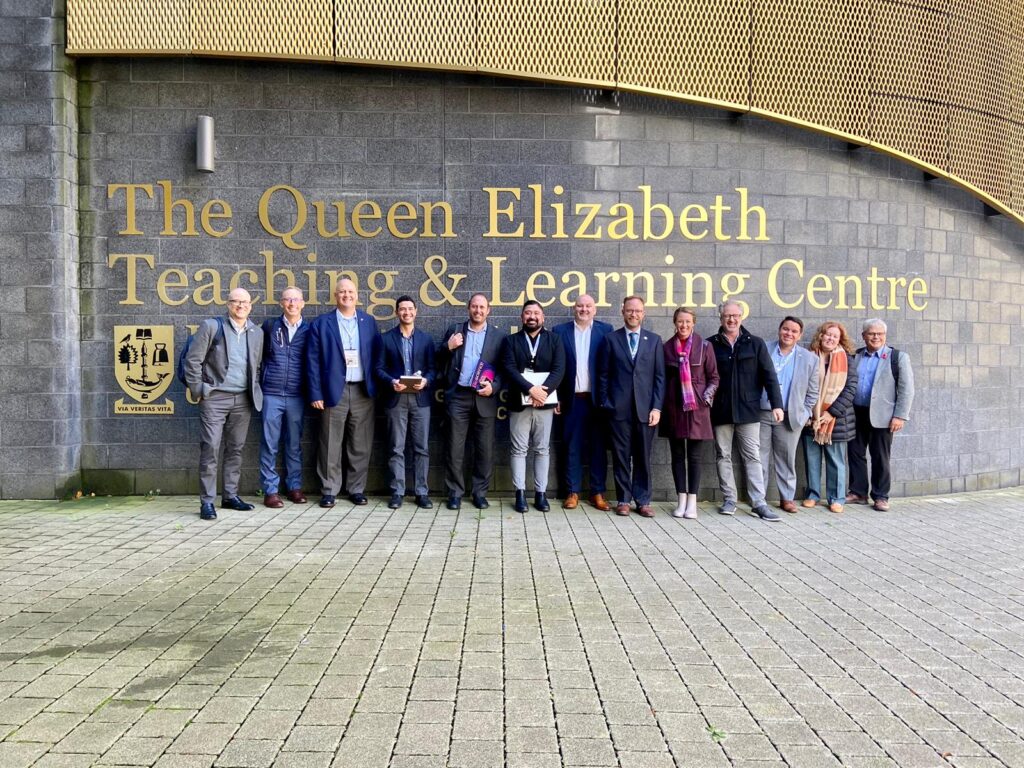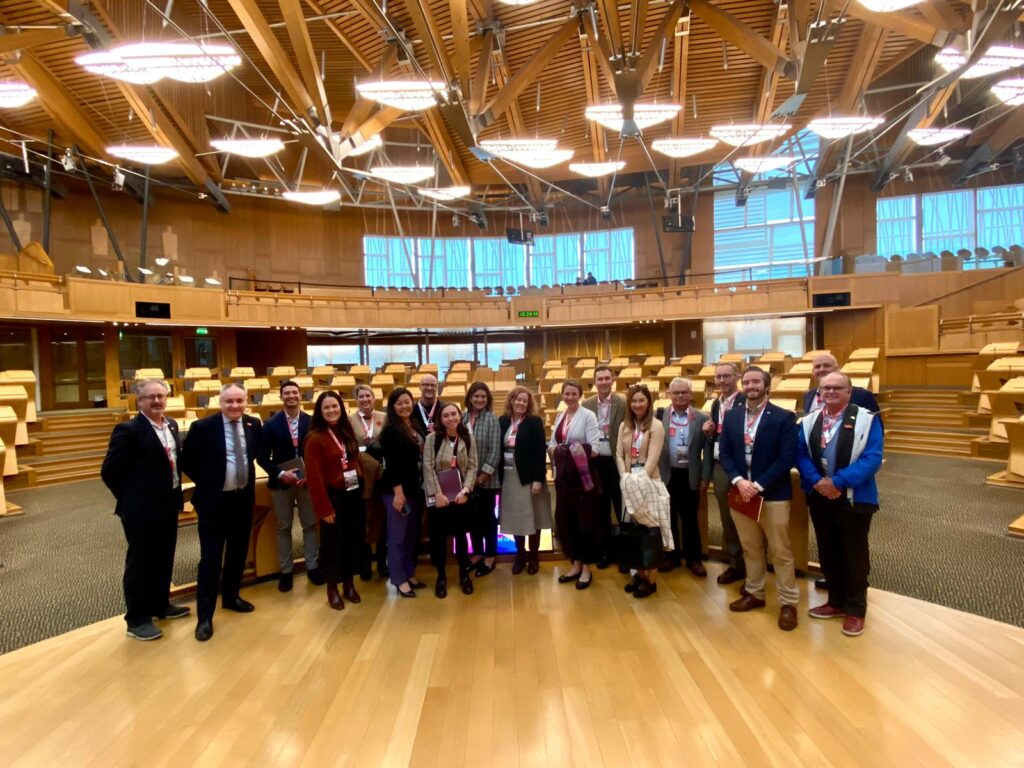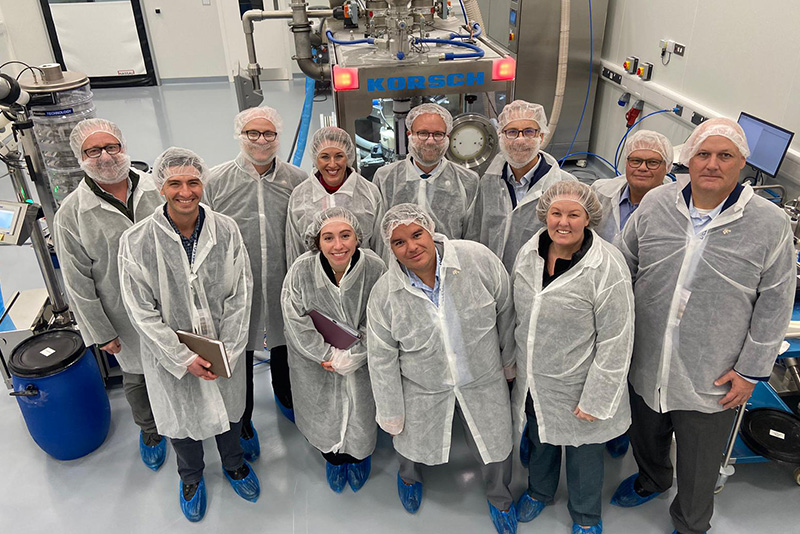By Andy Cullen, 01/2023.
This past fall, I had the incredible opportunity to join a delegation convened by the Metro Denver EDC in Scotland to see firsthand how the country has become home to one of the largest life science clusters in Europe. We met with key leaders in the space – from members of Scottish Parliament to top life science innovators – to better understand how Colorado can gain a competitive edge in this rapidly-evolving field.
In August of 2022, Scotland documented 770 life sciences companies and organizations, accounting for over 41,000 jobs in the industry. By comparison, Colorado recorded 720 life science companies and organizations, accounting for 32,089 jobs.
As Colorado joins states across the U.S. looking to accommodate the growing life science industry, what can be taken from Scotland’s rise to becoming one of the largest life science clusters in Europe?

Queen Elizabeth Teaching & Learning Centre in Glasgow.
Scotland’s Competitive Advantages
Healthcare and Government Structure
Two of the biggest contributing factors towards Scotland’s success in this field, is their single payer health care system. Their single payer health care system is funding projects that are going to benefit their people, and in the long run, save money on health care.
This model allows Scotland to invest in a completely different, and more dynamic way than we can here in Colorado.
Back in the 1980, England shut down the coal industry to break up the unions which had gained significant power in Scotland. As an unintended benefit, Scotland was forced to look to different means of energy long before most countries considered this option. This pushed Scotland to the forefront of the alternative energy market and helped them develop their wind, wave and solar technologies.
Strategic Adjacencies
Scotland is making proximity work in their favor. How they’ve been able to create adjacencies from an infrastructure perspective, has helped them become a key player in the competitive bioscience industry. With their hospital being located next to their college, and their Innovation Center located in between them, it creates symmetry between these different groups that are all trying to work towards a single solution.
The Prioritization of Lab Space
One of the most impactful moments from my time in Scotland was when I visited the Edinburgh BioQuarter. Here, they dedicate around 3,000 square feet of lab space to allow biotech companies to incubate their cutting-edge technology. As an incubator space where industry meets first-rate academics, clinical practitioners and medical innovators, potential tenants and investors are extremely attracted to the BioQuarter, making it a hub for innovation in healthcare practice.

Scottish Parliament Building in Edinburgh.
How can Colorado become a top market for the life science sector?
Level Up Available Funding
With competitive advantages like state-of-the-art engineering schools, the Colorado environment, and just the overall collaborative nature of our state, we have the potential to compete with cities like Boston, Dallas, or Seattle, who are on the forefront of the bioscience realm. Unfortunately, we are just generally lacking the funding to fully invest in the potential our state has in the bioscience space.
With the proper level of funding, Colorado can invest in the right technology, institutions, and structures that will make us a leader in the industry.
Invest in the High-Tech Infrastructure Needed
Historically, there hasn’t been a next phase for companies in the space as they progress in their stages. As they scale, they need two to three times the space, which is an immense infrastructure investment, and is why we are losing big opportunities here. Although building incubator spaces may be a pricey investment, the need for them is apparent.
Leverage Existing Institutions
Colorado needs to continue to invest in the areas that are going to make meaningful impacts on this industry, such as CU Boulder and the Anschutz Medical Campus. In addition, with NREL (National Renewable Energy Laboratory) and NCAR (National Center for Atmospheric Research) located in the Denver Metro Region, we are uniquely positioned to create partnerships and innovation within Colorado.
Our state recognizes that this will be a collaborative effort. Fellow trip attendees acknowledged the need for a coordinated regional effort to join forces to help bring companies to Colorado. Putting in more work and investing further into these existing organizations is what will set us above the standard.
At Tributary, our team is excited for the opportunities that exist to expand our life sciences industry here in Colorado and we are ready to partner with prospective companies considering our state for expansion. Thank you to the Metro Denver EDC for organizing such an inspiring trip that will undoubtedly help us propel Colorado’s life sciences industry forward.


